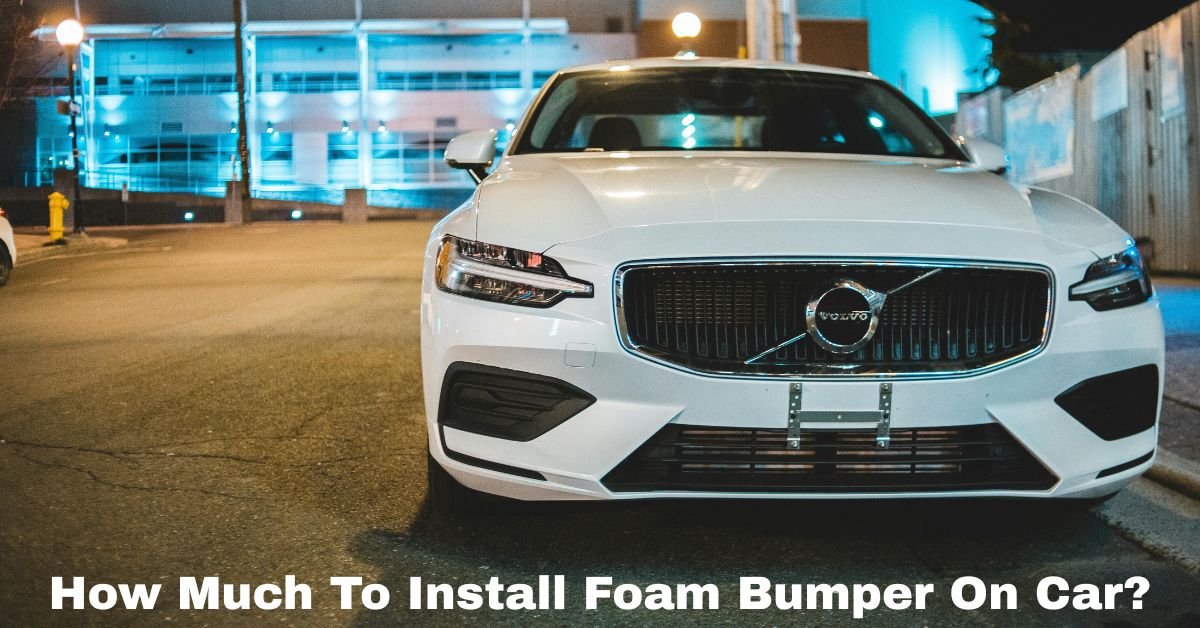When it comes to protecting your vehicle—and yourself—during a collision, your car’s bumper plays a critical role. A foam bumper, or more accurately, the energy-absorbing foam insert inside the bumper assembly, is a crucial component designed to absorb impact and reduce damage during minor accidents. If you’re considering installing or replacing a foam bumper, you’re probably wondering: how much will it cost?
Let’s dive into the details of foam bumper installation costs, factors that affect pricing, and what you should know before heading to the body shop.
How Much Does It Cost to Install a Foam Bumper on a Car?
What Is a Foam Bumper?
To clarify, most modern vehicles don’t use exterior bumpers made entirely of foam. Instead, they have a bumper cover (plastic or fiberglass) on the outside, a steel or aluminum reinforcement bar, and a foam absorber or impact pad sandwiched in between. This foam insert helps to absorb energy from low-speed impacts, such as a fender bender in a parking lot.
Over time, or after an accident, this foam piece can become compressed or damaged and may need to be replaced.
Average Cost of Foam Bumper Installation
The total cost to install or replace the foam insert in a car bumper generally includes parts and labor. Here’s a breakdown:
1. Cost of the Foam Insert (Part Only)
- OEM (Original Equipment Manufacturer) foam pads: $50–$150
- Aftermarket foam inserts: $30–$100
The make, model, and year of your car all affect the price. The parts of luxury and foreign cars are typically more costly.
2. Labor Costs
- Labor charges typically range from $75 to $150 per hour depending on your location and the body shop.
- Foam bumper installation can take 1 to 3 hours, especially if the bumper cover needs to be removed.
Estimated labor cost: $100–$300
✅ Total Estimated Cost:
On average, you can expect to pay between $150 and $400 for a foam bumper installation or replacement.
What Affects the Cost?
Several factors influence the final price:
• Vehicle Type
A small sedan will generally be less expensive to repair than an SUV, truck, or luxury car. Vehicles with sensors or cameras in the bumper may also require additional calibration.
• OEM vs Aftermarket Parts
Although OEM parts are typically more costly, they are more dependable and fit precisely. Aftermarket foam inserts are cheaper but can vary in quality.
Must Read: 3 Best Steps How To Reset Oil Life In 2014 Jeep Cherokee?

• Location
Labor rates vary widely depending on your region. Expect higher costs in urban areas or states with a high cost of living.
• Extent of the Damage
If the bumper cover, reinforcement bar, or sensors are also damaged, the cost will increase. In that case, you’re looking at a full bumper replacement, which can exceed $1,000.
DIY vs Professional Installation
If you’re handy with tools and have experience working on vehicles, replacing a foam bumper insert can be a DIY job. Here’s what to consider:
✅ Pros of DIY:
- Save on labor costs
- Parts are relatively inexpensive
- Satisfying to complete the job yourself
❌ Cons:
- May require removing the entire bumper
- Risk of improper installation
- Could affect safety and insurance claims
Unless you’re confident in your skills, it’s usually safer to have a professional handle the job—especially for newer vehicles with complex bumper assemblies.
Signs You May Need a New Foam Bumper
- After a low-speed collision
- Bumper feels loose or misaligned
- You hear rattling from the bumper area
- Cracks or dents in the bumper cover
Even if the outer bumper looks fine, internal foam damage can compromise its ability to absorb future impacts.
Final Thoughts
A foam bumper insert may appear to be a minor component, but it is crucial to the safety of your car. Installation costs typically range from $150 to $400, depending on the car and labor rates. If your bumper has been involved in an accident, even a minor one, it’s a good idea to have the foam insert inspected and replaced if necessary.
Investing in this repair now can prevent more serious (and expensive) damage in the future. Always get a few quotes from trusted body shops, and consider OEM parts for the best fit and performance.
